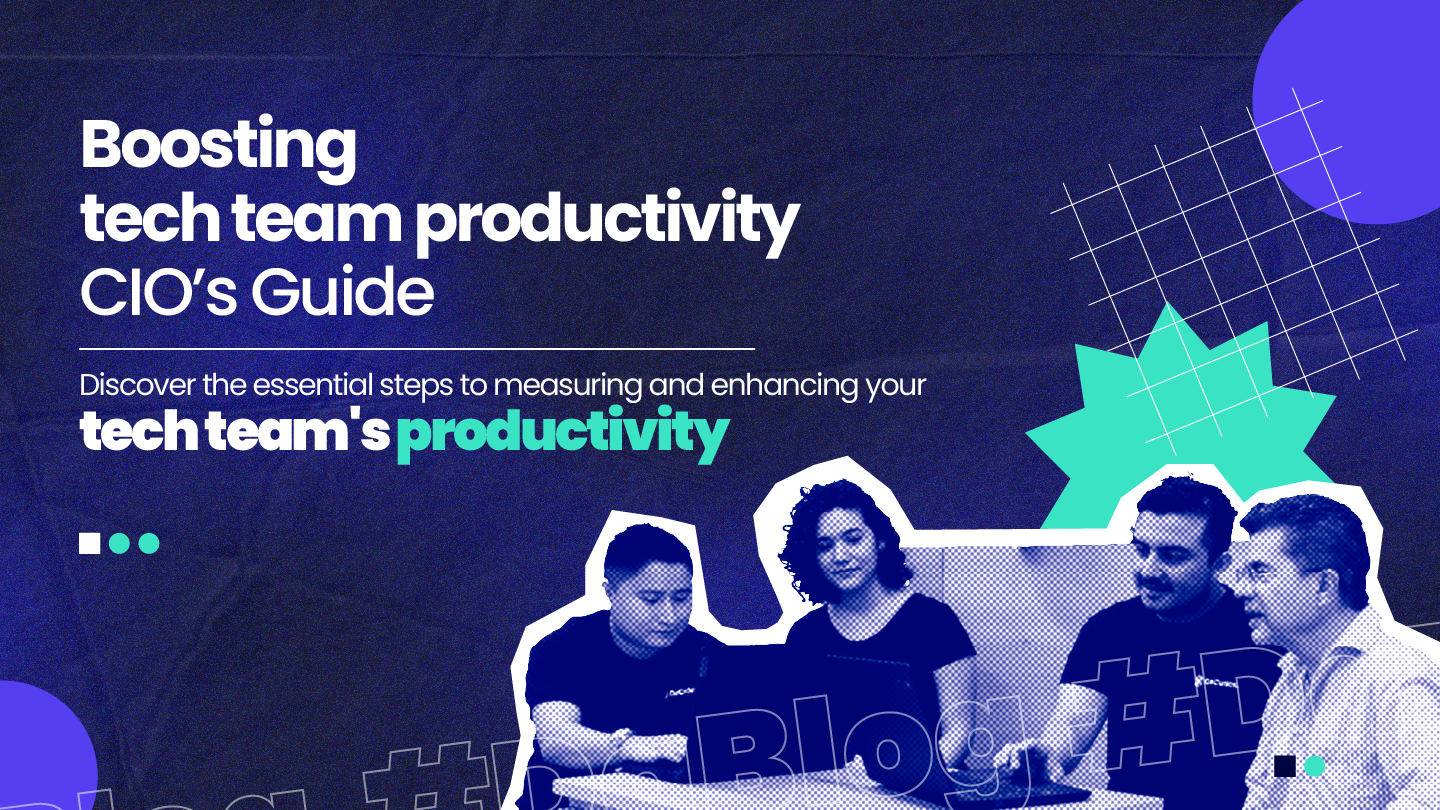Discover how CIOs can effectively measure and boost their tech team's productivity with key metrics.
Understanding Tech Team Productivity Metrics
To effectively measure and boost the productivity of a tech team, it is crucial for CIOs to understand the key metrics that can provide valuable insights. These metrics can include factors like project completion rate, average time to resolve issues, customer satisfaction ratings, and team workload distribution.
By analyzing these metrics, CIOs can gain a better understanding of the team's efficiency, identify areas for improvement, and make data-driven decisions to enhance productivity.
For example, tracking the project completion rate can help CIOs identify bottlenecks in the development process and take necessary actions to streamline workflow. Monitoring the average time to resolve issues can provide insights into the efficiency of the team's problem-solving capabilities.
Understanding these metrics and their implications is essential for CIOs to effectively manage and optimize their tech team's productivity.
Implementing Performance Measurement Tools
To measure tech team productivity accurately, CIOs should implement performance measurement tools that can track and analyze relevant data. These tools can range from project management software to specialized productivity monitoring applications.
By using such tools, CIOs can automate data collection and analysis, eliminating the need for manual tracking and reducing the chances of human error. These tools can provide real-time updates on metrics like task completion rates, time spent on each task, and individual team member performance.
Additionally, performance measurement tools can generate reports and visualizations that offer a comprehensive overview of the team's productivity trends and performance gaps. This enables CIOs to identify patterns, set benchmarks, and establish goals for improvement.
Implementing performance measurement tools not only streamlines the measurement process but also empowers CIOs with accurate and actionable data to drive productivity enhancements.
Fostering Collaboration and Communication
Collaboration and communication are crucial factors that contribute to the productivity of a tech team. CIOs can foster a collaborative and communicative environment by implementing effective strategies and tools.
Encouraging regular team meetings, brainstorming sessions, and knowledge-sharing initiatives can facilitate collaboration among team members. This allows for the exchange of ideas, feedback, and problem-solving approaches, leading to innovative solutions and increased productivity.
Moreover, leveraging communication tools like instant messaging platforms, video conferencing software, and project management platforms can enhance team communication and coordination. These tools enable seamless information sharing, task assignment, and progress tracking.
By fostering collaboration and communication within the tech team, CIOs can create an environment that promotes productivity, teamwork, and continuous improvement.
Encouraging Continuous Learning and Development
Continuous learning and development are essential for tech teams to stay updated with the latest technologies and industry trends. CIOs can encourage continuous learning by providing opportunities for training, attending conferences, and participating in workshops.
Investing in learning resources like online courses, books, and educational platforms can also empower team members to enhance their skills and knowledge. By acquiring new competencies, tech professionals can become more efficient in their tasks and contribute to the team's overall productivity.
Additionally, CIOs can establish mentorship programs or encourage knowledge-sharing initiatives within the team. This allows experienced team members to guide and support junior members, fostering a culture of growth and development.
By prioritizing continuous learning and development, CIOs can ensure that their tech team remains competitive, adaptable, and capable of delivering high-quality results.
Leveraging Technology for Efficiency
Technology plays a vital role in enhancing the efficiency and productivity of a tech team. CIOs can leverage various technological solutions to streamline processes, automate repetitive tasks, and optimize resource allocation.
Implementing project management software can help in organizing tasks, setting priorities, and tracking progress. Automation tools can be used to automate routine and time-consuming tasks, allowing team members to focus on more critical responsibilities.
Cloud-based collaboration platforms enable seamless file sharing and real-time collaboration, eliminating the need for manual file transfers and improving team efficiency.
Furthermore, leveraging data analytics and artificial intelligence technologies can provide valuable insights and predictions, empowering CIOs to make data-driven decisions and optimize team performance.
By harnessing the power of technology, CIOs can unlock new levels of efficiency and productivity within their tech teams.
Conclusion: Insight for entrepreneurs
In conclusion, measuring and boosting tech team productivity is crucial for CIOs to ensure optimal performance and achieve business goals. By understanding the key metrics, implementing performance measurement tools, fostering collaboration and communication, encouraging continuous learning, and leveraging technology, CIOs can effectively enhance their tech team's productivity.
It is important to regularly monitor and analyze productivity metrics to identify areas for improvement and implement targeted strategies. By doing so, CIOs can create a productive and high-performing tech team that drives innovation, meets deadlines, and delivers exceptional results.
By following the recommendations in this guide, CIOs can gain valuable insights and take proactive measures to maximize their tech team's productivity and drive organizational success.





